Building a great Fresher Resume
 Ashwin Gopalsamy
Ashwin Gopalsamy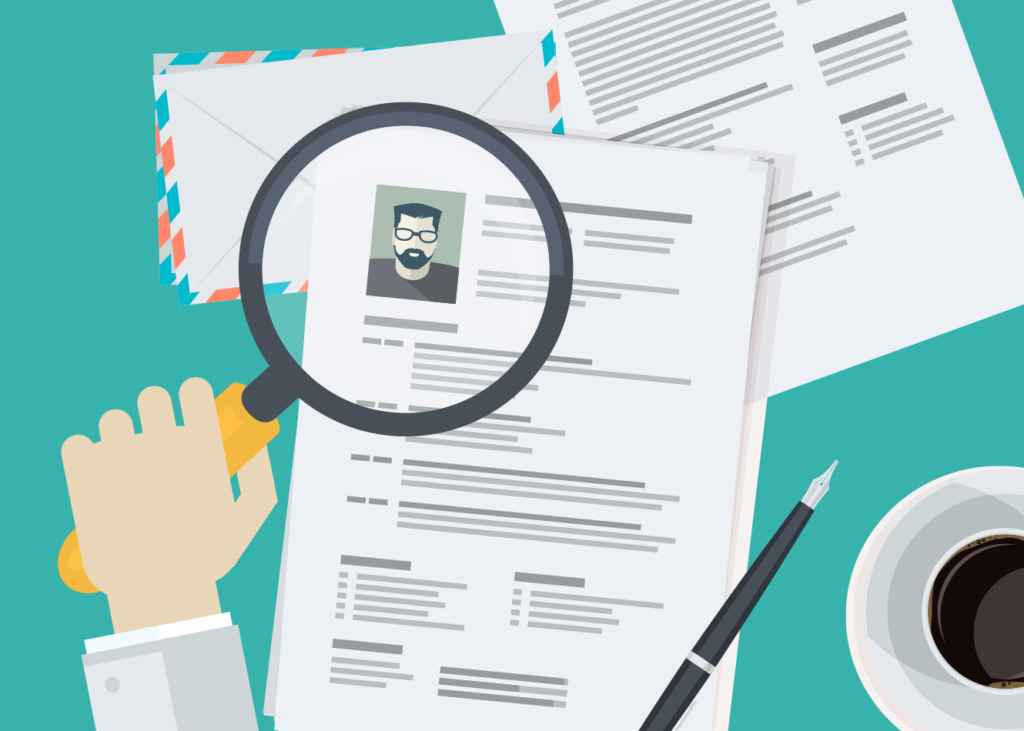
Resumes : A Constant Work-in-Progress
"A resume will always be a work-in-progress. If you keep evolving, you have to keep updating your resume. If you stop evolving, that's when you can stop updating your resume."
Your resume should represent your best and most current work. Whether you are a junior year student, final year or fresher or a professional in your industry, you will want to update your resume every once in a while. This will not only make you reflect on your accomplishments, but also ensure that your resume is up-to-date whenever you need it.
Okay vs. Good vs. Wow
Let’s explore the three tiers of resume quality: Okay, Good, and Wow. Understanding these levels will help you create a resume that truly stands out.
👍🏽 Okay resumes
At this level, your resume is well-structured, free from grammar and spelling errors, and offers a basic snapshot of your experiences. However, it lacks specific evidence of your skills or the impact of your accomplishments. It’s informative but easily forgettable.
👌🏽 Good resumes
Good resumes build on the okay version by connecting experiences and accomplishments to your skills. They highlight your strengths and make a light impact on the reader. If the resume addresses the qualities the employer is seeking, it can lead to an interview.
🤩 Great resumes
A great resume showcases skills tailored to what the employer is looking for. It articulates your accomplishments in a relevant context, with quantifiable results that validate your skills. This level also reflects your unique strengths and personality, making a memorable impression that can significantly increase your chances of landing an interview.
Key characteristics of a wow resume:
Flawless spelling and grammar
Specific accomplishments and the skills used to achieve them
Relevant qualities that appeal to the employer
A clear alignment with the company's needs
Format
Pay attention to these formatting guidelines to enhance readability:
Font Size: 10pt to 12pt
Font: Choose a professional style like Arial.
Length: Aim for one page, two at most.
Margins: Keep them between 0.5 to 1 inch.
Text Alignment: Use left-aligned or justified text.
Line Spacing: 1 to 1.5
Bullet Points: Keep them concise.
Voice: Use active voice (e.g., “Implemented an app” instead of “An app was implemented”).
Content
Your resume should include:
Your Name
Education (in chronological order)
Skills
Contact Information (typically at the top)
Nice to have sections to stand-out:
Your photo (optional)
Introductory header or resume objective
Highlights or personal projects
Links (e.g., GitHub, LinkedIn, personal website)
Additional information (e.g., hobbies, non-technical skills, achievements)
Writing the Main Content
The most important thing that can help you stand out is, 'What makes you distinct from other?'.
You can answer this question, with your resume by showcasing your unique ability.
Here are some things you can do to get started writing out the main content of your resume:
1. List some skills/values
First, list the skills that the company is looking for. Most companies usually have a job description that states the skills they need for a potential candidate. You can even do further research on the company (use social media, websites and connections) to find out their values and what they primarily look for in a candidate.
Next, list your own skills and values. In order to be considered for the role, your skills and values need to align with the ones the company is looking for. Select the ones that you have that will grab the attention of the employer.
2. Reflect on your experience
To distinguish yourself, consider what makes you unique. Here’s how to begin:
List Skills and Values: Identify the skills mentioned in the job description. Research the company to understand what they value in candidates. Then, list your own relevant skills that align with those needs.
Reflect on Your Experience: Think about instances where you demonstrated those skills. If a company is seeking problem-solving abilities, recall a specific challenge you overcame and describe the impact of your solution.
Construct Concise, Impactful Points: Use a simple format:
Action (What you did)
Context (Details of the situation)
Result (Your impact, ideally with quantifiable results)
Here are some examples:
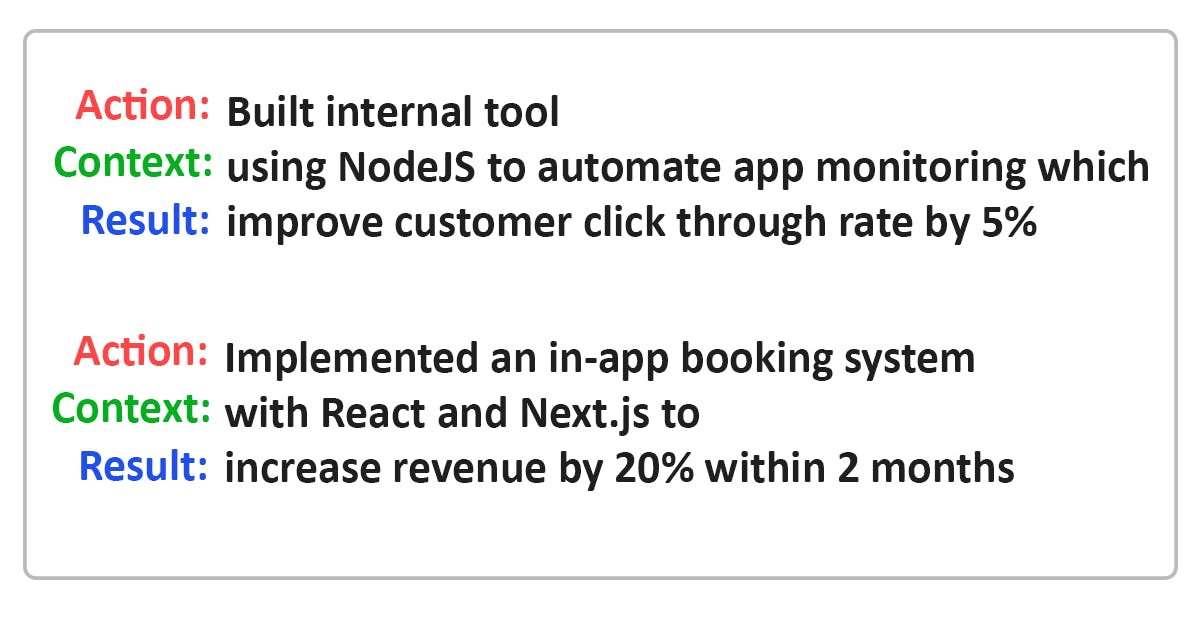
Start with action verbs relevant to the tech industry—like "built," "developed," or "implemented"—and make sure your statements align with what the employer is looking for.
Common Mistakes
1. Not having a target audience
Remember, employers typically spend only about six seconds scanning a resume. Tailor your content to meet their specific needs to capture their attention quickly.
2. Not using strategically chosen words
Keywords matter. If the job requires a Java developer, don’t list skills in C++ or Python unless they’re relevant. Be mindful of the terminology used in the job description.
Example of resume with good details on technical skills but lack of action keywords (fictional person):
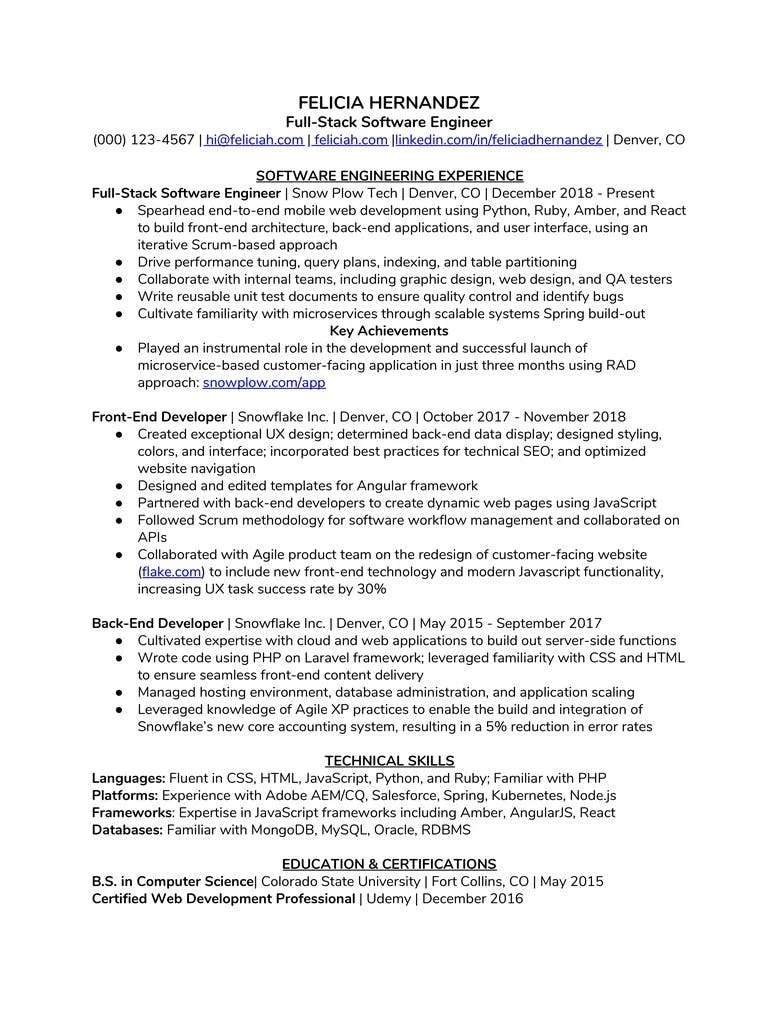
3. Too wordy/Not enough words
Strive for clarity. Use the action-context-result format to keep your points concise yet informative. Avoid unnecessary jargon or overly complex sentences that might confuse the reader.v
Example of too wordy resume with too many bullet points (fictional person):
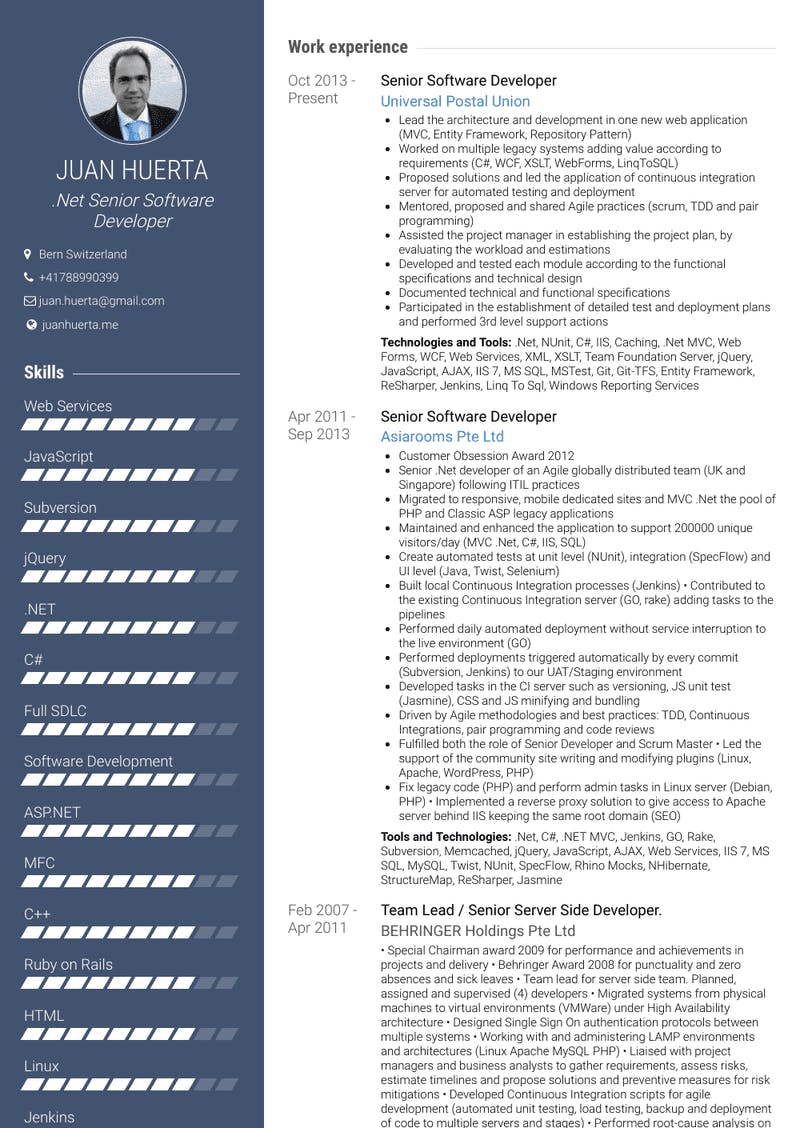
Examples
Here are a few resumes I found that are excellent for inspiration (fictional people).
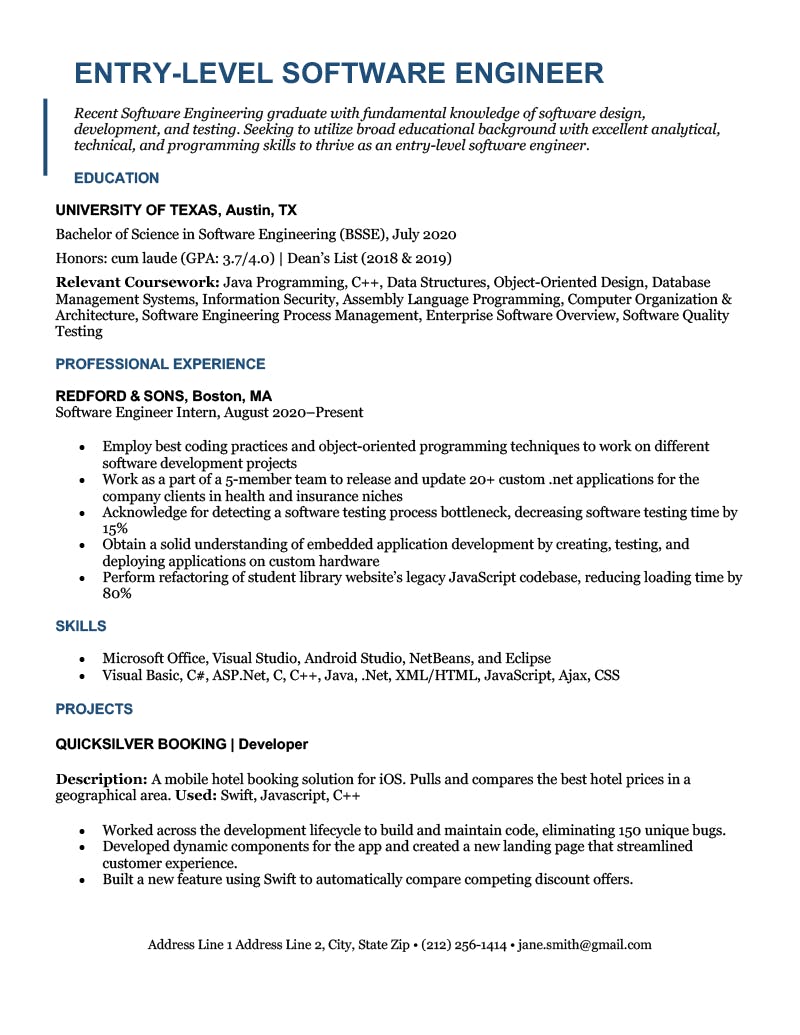
Source: resumegenius.com/wp-content/uploads/Entry-L..
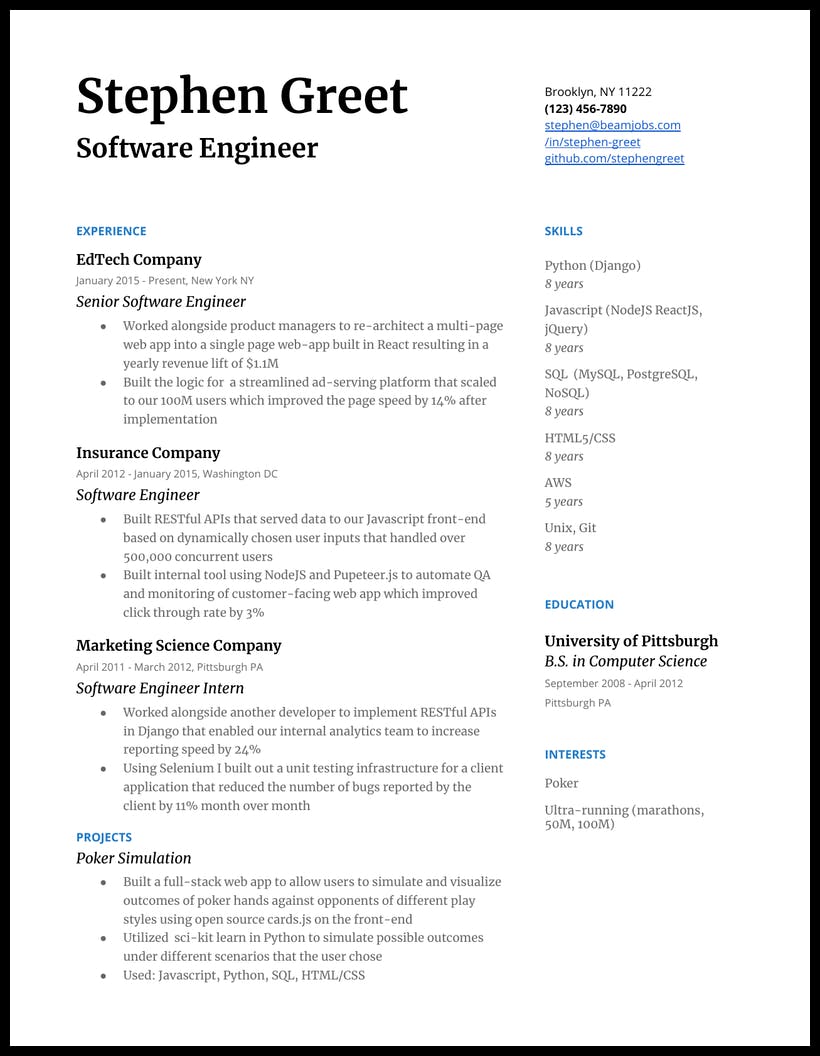
Source: cdn.buttercms.com/lQoWeAzkSoWUGw5o0mL4
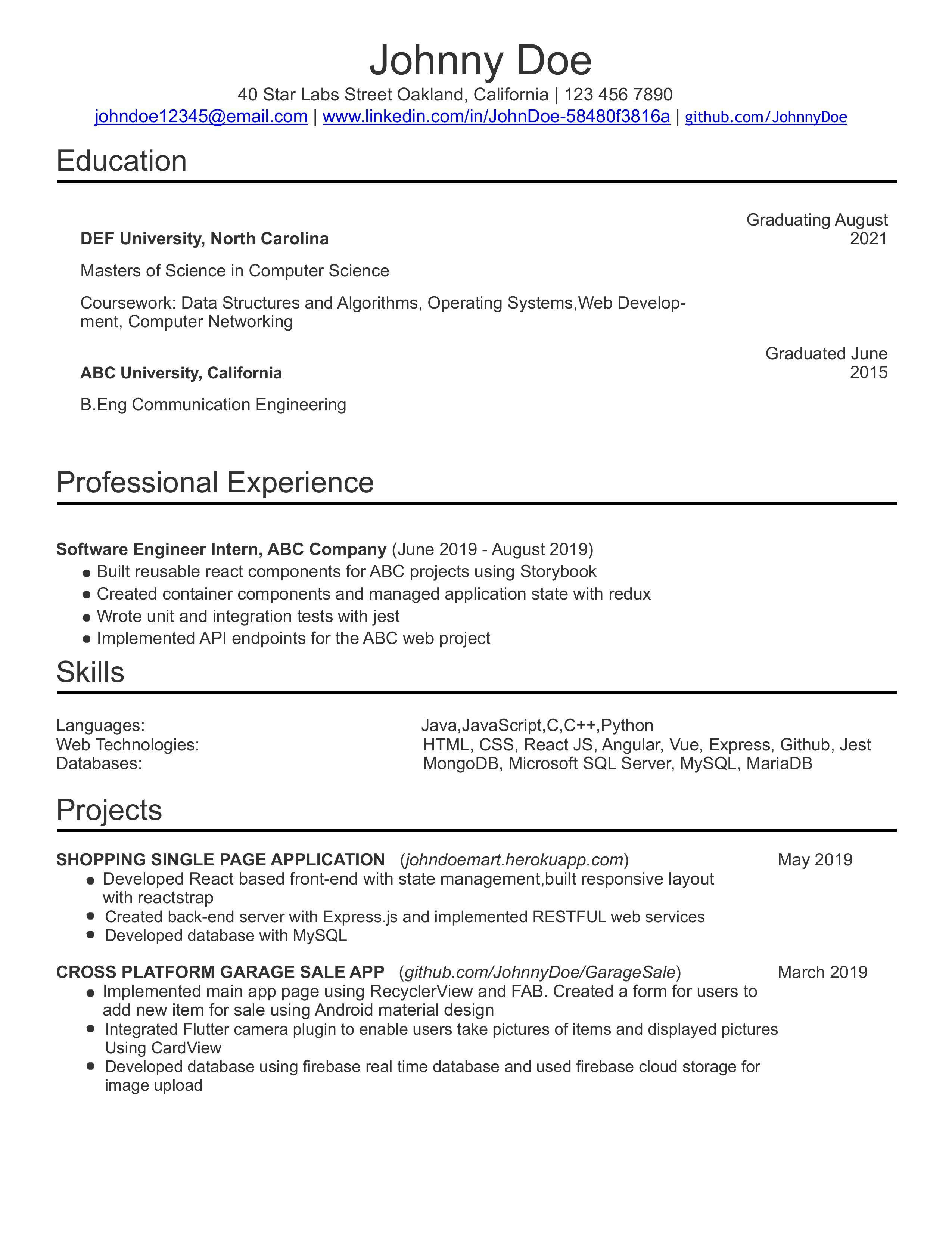
Source: cdn-images.resumelab.com/pages/software_eng..
Extra Resources:
Resume Builder - Android App 🔗 -> For those who don't own a PC.
Conclusion
Thank you for taking the time to read through these points. I hope you found them valuable in your resume-building journey. If you have any questions, feel free to leave them in the comments. Wishing you all the best in landing your dream job!
All credits to Victoria Lo (https://lo-victoria.com/) for the insightful points, which I’ve adapted to better fit freshers.
Subscribe to my newsletter
Read articles from Ashwin Gopalsamy directly inside your inbox. Subscribe to the newsletter, and don't miss out.
Written by

Ashwin Gopalsamy
Ashwin Gopalsamy
Product-first engineer, blogger and open-source contributor with around 4 years of experience in software development, cloud-native architecture and distributed systems. I build fintech products that process millions of transactions daily and drive substantial revenue. My expertise spans designing, architecting and deploying scalable software, focusing on the business under the code. I collaborate closely with engineers, product owners, and guilds, known for my clear communication and team-centric approach in dynamic environments. Colleagues appreciate my adaptability, openness and focus on diverse, meaningful contributions. Beyond coding, I’m recognized for my documentation, ownership and presentation skills, which drive clarity and engagement across teams. Bilingual in English and Deustch, I bridge cross-functional teams across geographies, ensuring smooth, efficient communication. I’m always open to new opportunities for connection and collaboration. Let’s connect and explore ways to create together.